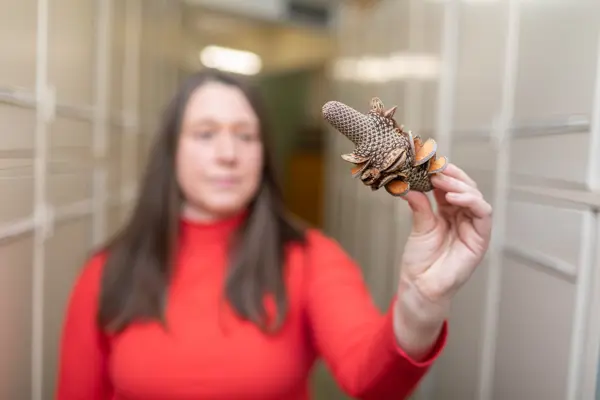
Squirrelling away seeds and fruits for science.
Most of the plant specimens in the National Herbarium of Victoria lay flat, pressed, and dried on sheets, but it's not as simple as one size fits all for bulky material.
Take the woody fruit (infructescence) of Australian Banksia species or velvety Boab fruit (Adansonia gregorii), which are best appreciated in three dimensions.
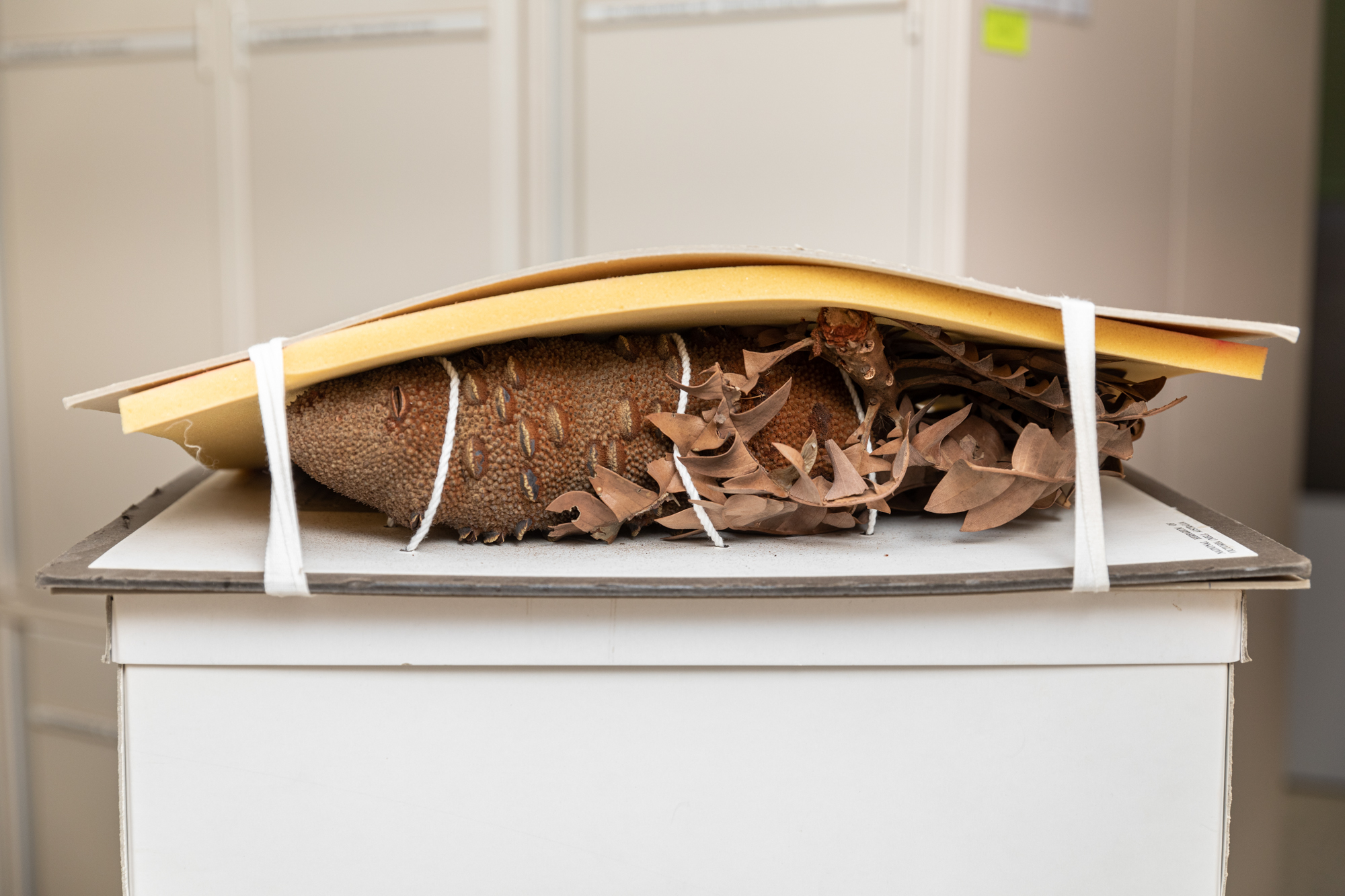
We speak with database officer Eugenia Pacitti as she introduces us to some of the approximately 800 carpological specimens held in the State Botanical Collection.
"Since joining the herbarium about 15 months ago, I've worked with thousands of specimens, and some of my favourites are seeds, seed pods and fruits. Known as carpological collections (after carpology, the study of seeds and fruit), these structures come in an amazing array of shapes, sizes and textures," explain Pacitti.
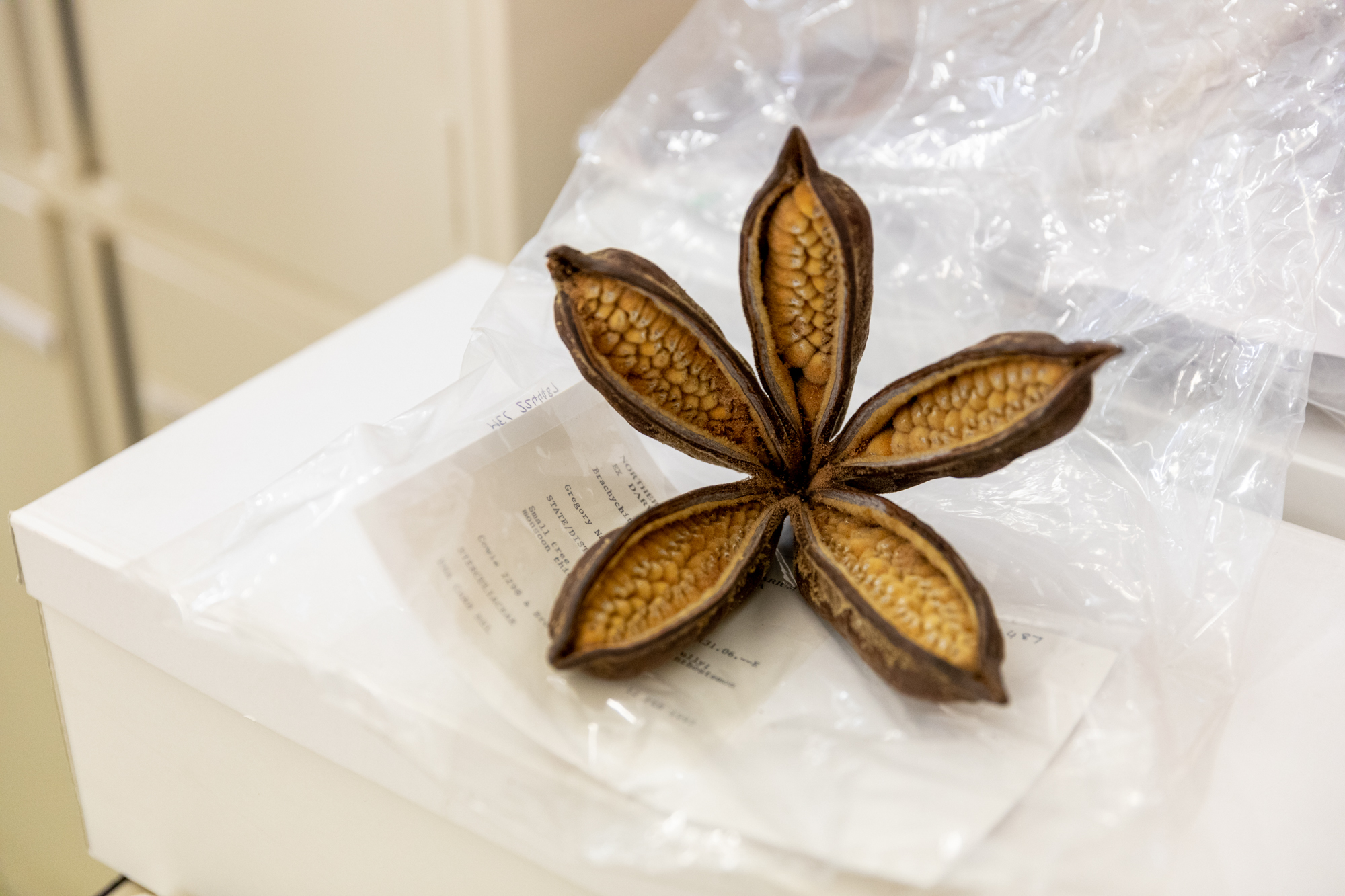
"From a distance, the pictured Brachychiton spectabilis (also known as bottletree or Kurrajong) follicles are striking in their star-like shape. Looking up close reveals dozens of ovoid seeds attached inside, in a state ready for dispersal."
Eugenia PacittiIn my case, I have a background in history and museum collections management. I enjoy caring for objects and making records of the specimens, including details of when and where they were collected, accessible to the public.
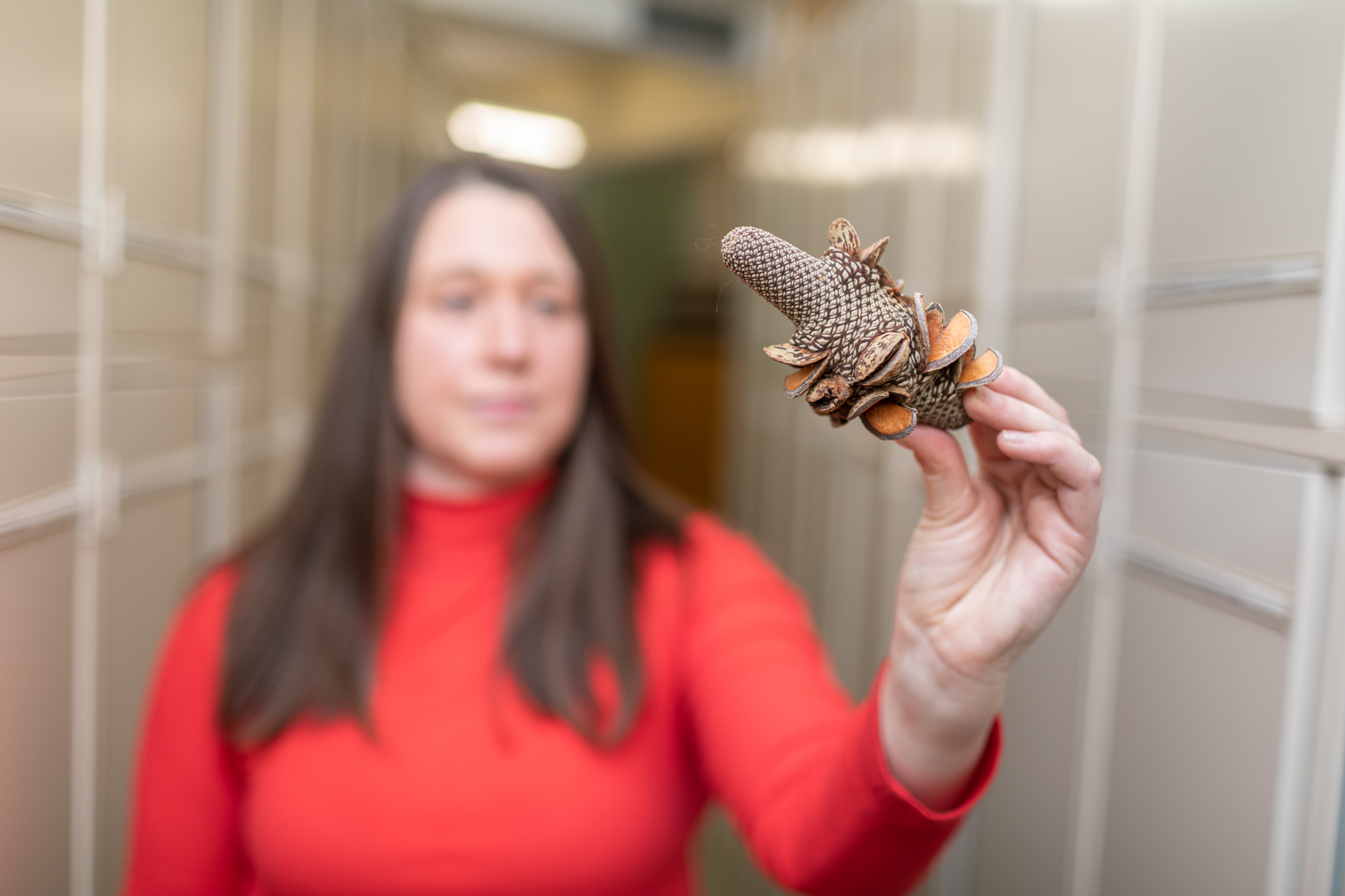
Eugenia continues, "It's also hard to look past the fruit of Banksia menziesii with its intricate patterns and follicles, which open like mouths to release seeds. Herbarium specimens like these two allow botanists to study how the species reproduce".
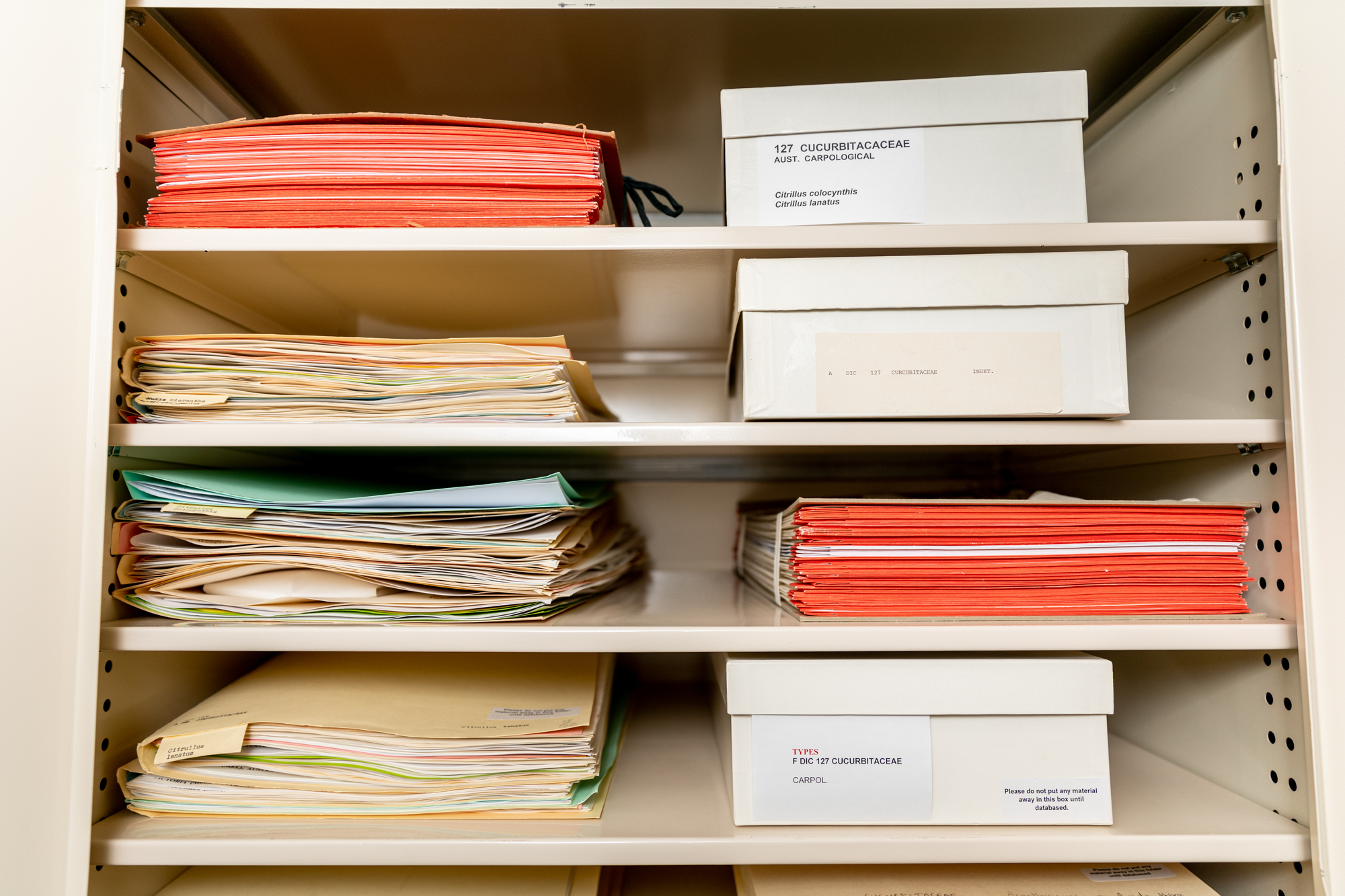
"My colleagues and I catalogue the specimens, bag them up and place them in cardboard boxes so that they can be easily retrieved for future research."
